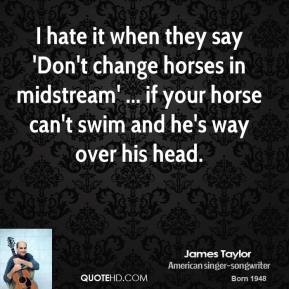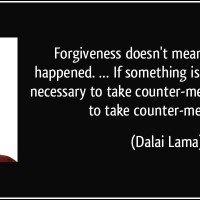I’m most interested to see what the LNP do with Prime Minister Tony Abbott come the next federal election. He’s been conspicuously absent in recent state election campaigns, presumably because nobody thinks he can do them any kind of good with his presence. So what on earth will his party do with its leader when we troop off to vote for our country’s next government?
Abbott subjected himself to some self-harm yesterday as he argued his case for the dangers involved in changing leaders during a government’s first term. Citing the epic game of musical chairs played by the ALP government during the Julia Gillard – Kevin Rudd leadership saga, Abbott expressed the opinion that it’s certain death to switch horses mid-stream. His party has the sense to know this, he believes, and so his leadership is secure. The country can go to the dogs and the less well-off can struggle and starve, but hey, I’m secure in my job, folks.
I know I’ve mixed metaphors, but I sort of like the image of chairs, music, dogs, streams and horses in the middle of them. It makes as much sense as anything else in our politics.
It’s hard to imagine that changing leaders could do the LNP government any more harm than staying with the one they’ve got. I suspect many people would be hugely relieved and congratulate them on their common sense if they took that step.
The dangers of succumbing to the idée fixe that because it was so damaging for the ALP to change leaders it will be equally damaging for the LNP, are many. They include an ignorance of the significance of context: the two situations are quite different in the broad perspective, the perspective that is most apparent to voters. Rudd was an extremely popular leader who was to all appearances ousted unjustly and in a manner that outraged much of the electorate. Practically everyone has some grievance against Abbott, and many just hate him because he is.
There may be similarities in the in-house view, the view apparent to political tragics rather than more broadly, of party discontent with a leader who is perceived as out of touch and chaotic, and perhaps even a tad despotic, if leaks of discontent are anything to go by. There’s an enlightening piece on these matters by Paula Matthewson here.
What we see at the moment is a leader who appears increasingly weakened by strife, both endogenous and exogenous. Tony Abbott never seems less than strained. As we used to say when we lived on Bougainville Island, we have two seasons, wet and wetter and so it is with Abbott, he is strained and more strained, but I don’t believe I’ve seen the man comfortable with himself since his days in opposition when he raged across the table at the Labor government.
For mine, they should let him keep his job. The ALP needs all the help it can get, and Tony Abbott has to be one of the opposition’s best helpers.
If Abbott gave a stuff about anyone other than himself, he’d step down, citing ill -health or some other face-saving gibberish, and give his party a better chance at a second term. Otherwise, come the next election campaign they’re going to have to lock him in a cellar till it’s over, because the man mostly nauseates everyone, as far as I can tell.




 There are three related issues that I’d like to briefly mention here on the way to providing some hard science that people who want to be leaders could find useful, if not compelling.The first is that the ‘great’ debate about whether leaders are born or made is a non-event. The issue is more about what people do that make them leaders and whether they have the capacity to perform the behaviours. It is clear that some people can’t be good leaders and others can. The second issue is closely related to the first and that is that people in leadership roles do not pay much attention to the social, anthropological and psychological evidence about what great leaders do and how to get the most out of people and, ergo, organisations. Leadership is treated a bit like counselling and teaching (other than in schools), that it that anyone can do it, without any formal training, if they have the inclination. It is fascinating that we still promote people to leadership roles on the basis that they have demonstrated high levels of competence in their profession (being an engineer, academic, town planner). Lastly, for this little article at least, the leadership literature is, at best, fluffy and has probably not had much impact, other than the occasional halo effect, on what most people in leadership roles do at the coalface.With these three issues in mind it is interesting to actually look at the science behind what people need to do in order to become good leaders. The evidence is pretty well overwhelming concerning the conditions in which people perform best at work. The tragedy is that the evidence is not accessed, oversimplified or incorrectly interpreted. I know of many organisations that have been sold psychological ‘pups’ by consultants or whose CEOs have read a trendy book on leadership at the airport that sounds good but has not evidential base. These ‘pups’ come in the form of untested theories and models that are anecdotal at best. They might consist of colourful and sexy personality testing instruments that have no reliability or validity whatsoever and are simplistic in the extreme. Medical practitioners, psychologists, dentists, nurses, physiotherapists, engineers are required to use evidence based practice. Why not people in leadership roles?We know from many social psychological experiments that people work best in an environment where they have control over their immediate work, are informed, make a contribution to decision making, feel that what they do is worthwhile, feel that they have a positive future, feel a valued member of the team, are acknowledged for what they do, are appropriately rewarded, have interesting work, and enjoy optimal variety in their work,
There are three related issues that I’d like to briefly mention here on the way to providing some hard science that people who want to be leaders could find useful, if not compelling.The first is that the ‘great’ debate about whether leaders are born or made is a non-event. The issue is more about what people do that make them leaders and whether they have the capacity to perform the behaviours. It is clear that some people can’t be good leaders and others can. The second issue is closely related to the first and that is that people in leadership roles do not pay much attention to the social, anthropological and psychological evidence about what great leaders do and how to get the most out of people and, ergo, organisations. Leadership is treated a bit like counselling and teaching (other than in schools), that it that anyone can do it, without any formal training, if they have the inclination. It is fascinating that we still promote people to leadership roles on the basis that they have demonstrated high levels of competence in their profession (being an engineer, academic, town planner). Lastly, for this little article at least, the leadership literature is, at best, fluffy and has probably not had much impact, other than the occasional halo effect, on what most people in leadership roles do at the coalface.With these three issues in mind it is interesting to actually look at the science behind what people need to do in order to become good leaders. The evidence is pretty well overwhelming concerning the conditions in which people perform best at work. The tragedy is that the evidence is not accessed, oversimplified or incorrectly interpreted. I know of many organisations that have been sold psychological ‘pups’ by consultants or whose CEOs have read a trendy book on leadership at the airport that sounds good but has not evidential base. These ‘pups’ come in the form of untested theories and models that are anecdotal at best. They might consist of colourful and sexy personality testing instruments that have no reliability or validity whatsoever and are simplistic in the extreme. Medical practitioners, psychologists, dentists, nurses, physiotherapists, engineers are required to use evidence based practice. Why not people in leadership roles?We know from many social psychological experiments that people work best in an environment where they have control over their immediate work, are informed, make a contribution to decision making, feel that what they do is worthwhile, feel that they have a positive future, feel a valued member of the team, are acknowledged for what they do, are appropriately rewarded, have interesting work, and enjoy optimal variety in their work,







































Recent Comments